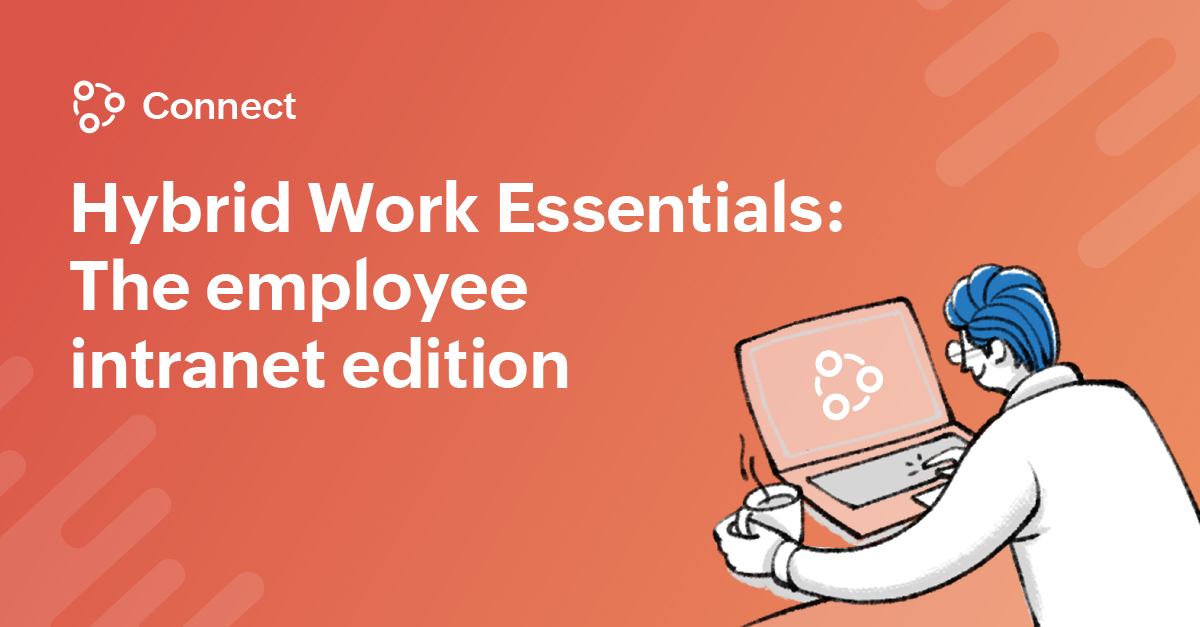- HOME
- Hybrid Work
- Establishing a remote work culture: How can employee intranets help?
Establishing a remote work culture: How can employee intranets help?
- Last Updated : November 29, 2024
- 691 Views
- 4 Min Read

With many companies adopting a permanent work-from-home or hybrid policy, one of the most important aspects of this transition is the shift in work culture it brings. Are employees able to communicate with one another just as easily as they used to when working without common office spaces? How can employees continue to remain engaged? How has work culture shifted to accommodate the same benefits in a different context?
To understand this, we need to briefly delve into what work culture entails.
What is work culture?
In the late 1950s, Edgar Schein made some interesting observations when working for National Training Labs in Boston with leaderless training groups. Schein would bring in a group of executives and sit down with the assembled group in a circle and say nothing. When the group asked what was happening, he would respond with, "What do you want to be going on?"
After these sessions, Schein noticed that people began to streamline their work; some people showed signs of leadership, and the group developed their way of doing things. Within a few days, a sense of group identity settled in, leaders were recognized, and the group started to follow a set of abstract rules. A group culture was created with no direction.
Schein termed this "organizational culture." This is modern work culture as we know it, defined as the shared values, goals, beliefs in the office environment that oversee work and behavior. Alternatively, in simpler terms, the way people approach work and other members of the organization.
Why is work culture important?
Organizations are about people, and by nature, people constantly look for connections: the feeling of belonging somewhere and a sense of purpose to move them forward. Work cultures establish this by welcoming employees, encouraging them, providing them with opportunities, and helping them develop their identities. As organizations go global, their people rely on technology to foster connections, collaborate, and bring teams together. Present-day work cultures have evolved beyond restrictions of company atmosphere, physical spaces, and geographical boundaries, leaning more towards an inclusive, people-oriented approach.
Work culture directs the way employees interact with each other and with the management. An open, transparent culture allows the free flow of ideas, builds trust, creates positive feedback loops, motivates employees, and helps them maintain a balanced approach. More stringent and hierarchical cultures tend to restrain employees, making it difficult to work together or build trust, leaving them unhappy with their work.
According to a study by Glassdoor, covering over 5000 adults across the USA, UK, France, and Germany, 77% of adults said they would consider a company's work culture before applying for a job. This tells us that any negative observations or ideas a person may have about a company's work culture clearly diminishes the company's image and value. These days, more than ever, people are looking at work as more than just another means to earn; they want to be valued, provided with opportunities to grow, be satisfied and interested in their work, and maintain a good work-life balance.
How can companies maintain a healthy work culture when working remotely?
The pandemic pushed companies to shift to digital workplaces, with most of their communication, knowledge-sharing, and collaboration happening on secure cloud-based platforms. In this regard, modern intranets have gained prominence. Intranets provide an internal ecosystem for work culture to thrive, regardless of where employees work from.
Role of intranets in maintaining a healthy remote work culture
Communication is one of the cornerstones of a great work culture. Establishing workplace relationships begins with the ability to hold open conversations. Modern company intranets enhance the employee experience by allowing them to share their ideas, provide feedback, and interact with one another through social features the same way they would when sharing a common office space.
When working remotely, it's important to build a strong foundation of trust. You trust that your co-worker is getting something done, and they reciprocate it. Building trust is done through effective leadership: it is a top-down approach. For team members to trust each other, the manager needs to place their confidence in the team.
Company intranets strengthen this by promoting transparency through organization-wide announcements, internal forums, and virtual town halls.
Those in leadership positions can provide details of where the company or team stands—their achievements, their goals, and the challenges they face. Announcements and internal forums act as the company's newsroom, while internal forums and groups can also double up as an idea-sharing platform—a water cooler of sorts—allowing employees to share their thoughts, network, and find interest groups. Virtual town halls bring company management and employees closer to each other, promoting transparency and building trust.
Once the bigger picture is painted and all lines of communication are open, employees understand what needs to be done, allowing teams to become more cohesive, motivated, and engaged.
Towards an inclusive, open culture
Intranets provide flexibility for the way culture is propagated. From how employees interact to the accessibility of information, intranets reflect the way organizations work, allowing these unwritten rules and beliefs to trickle down to the newest employee. In our present-day business world, it is no longer just about productivity or the number of hours spent working; organizations also need to be empathetic, allow employees to maintain work-life balance, and make them feel valued.
Great work cultures make employees feel like they belong in the organization. As companies switch from on-site teams to remote teams, one of the best ways to ensure that employees continue to benefit is by creating pleasant experiences through digital workplaces. An employee intranet is a great way to get a head start.


